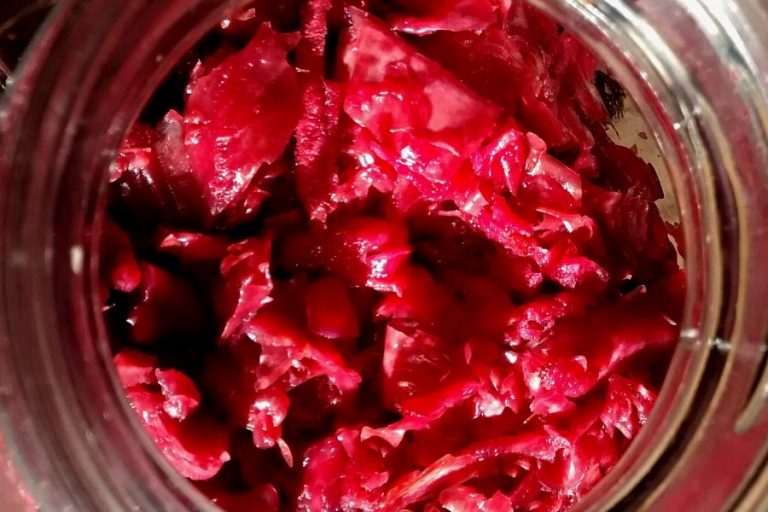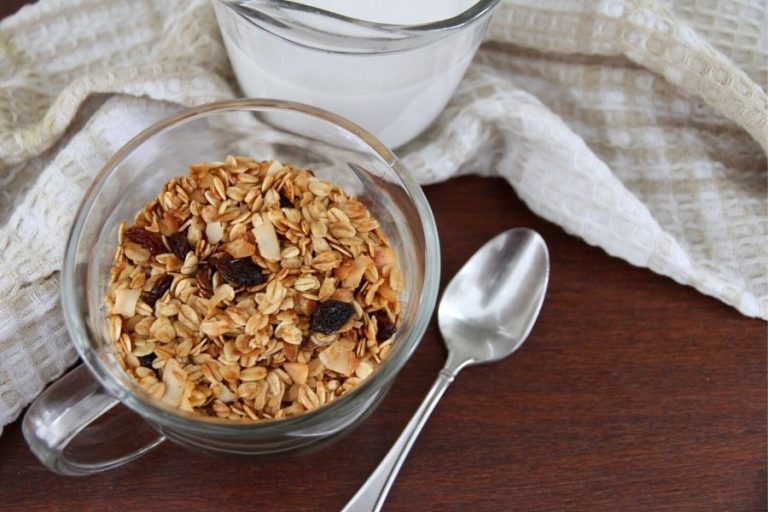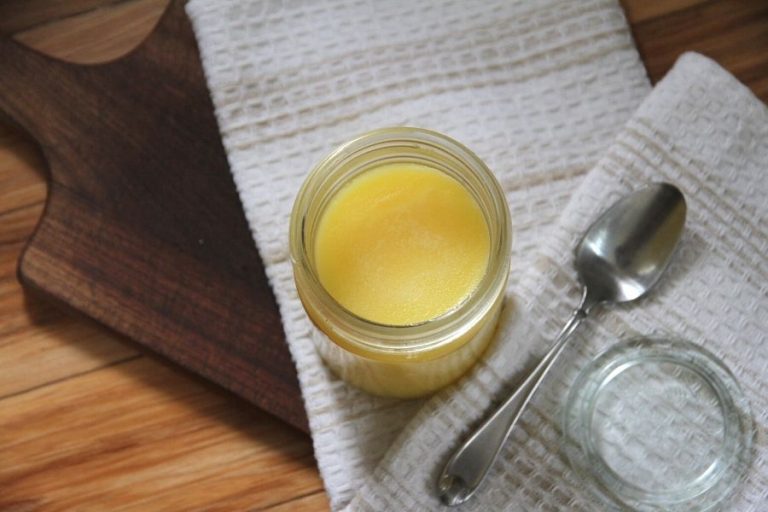How to Clean a Cast Iron Dutch Oven
Tired of scraping at stuck-on food in your cast-iron dutch oven? Here's how you can clean iron dutch ovens in a few easy steps, without ruining your non-stick surface!
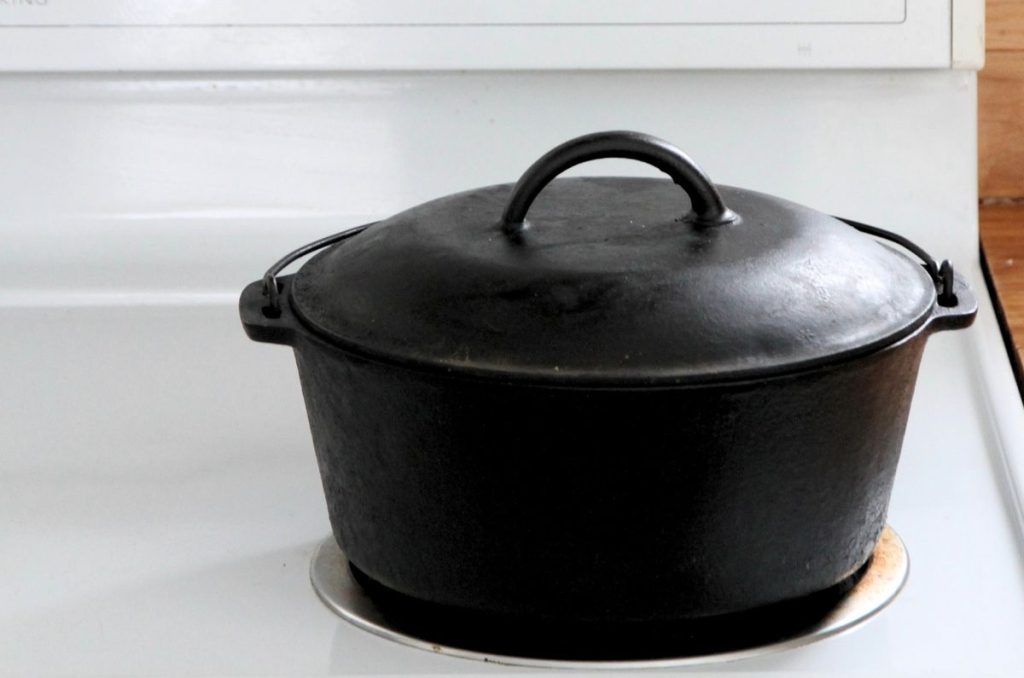
The care and cleaning of cast iron is one of those controversial topics among home cooks. This is especially true when it comes to cleaning your dutch oven!
There are so many opinions on how to "properly" clean cast iron, and many of these opinions directly contradict one another.
I always take this as a sign that there isn't a right or wrong way to do something. It's about finding what works for you and your specific pieces of cast iron!
After years of using this traditional iron cookware and not knowing exactly how to wash it, I finally fell into a pattern of cleaning that has stuck with me.
It's effective, easy on the finish and unless you really burn food onto the iron, doesn't require soap, steel wool or other abrasive materials.
What is a Cast Iron Dutch Oven?
A dutch oven is a large pot with a lid that is safe for both stovetop and oven use.
While materials can vary, the cast iron dutch oven is actually made from iron. Hot iron is cast in a mold and when it cools, a piece of iron cookware is created that will last for generations.
3 Types of Dutch Oven
There are 3 different types of dutch ovens readily available to the home cook.
Stainless Steel Dutch Oven-these dutch ovens are just a large pot with lid that is oven safe. It doesn't require regular seasoning, and you can run both pieces through the dishwasher
Enameled Dutch Oven-made from cast iron, this dutch oven has an enamel coating. This enamel finish is often brightly colored. Because these dutch ovens are pre-finished, you don't have to season them.
Cast Iron Dutch Oven-traditional cast iron is made from pig iron. It doesn't have a finish per se, and is easy to identify by the solid black color and heavy weight.
This is the type of dutch oven you'll learn how to clean today!
Items You'll Need
- 7 quart cast iron dutch oven with lid
- a scrub brush with a long handle
- silicone oven mitts for handling a hot dutch oven
- paper towel
- mild dish soap for cleaning grease on outside of cookware
How to Clean a Dutch Oven
Everyone cleans food residue from their cast-iron cookware, differently. I prefer to skip the dawn dish soap, steel wool and even forgo the soft sponge and baking soda method.
Instead I use heat, water and a scrub brush. It's worked well for me over the years, is a very quick and efficient way to clean a cast iron dutch oven.
It doesn't matter if you have dough, egg or meat residue in your dutch oven.
Here's how it works.
Step 1
Remove food from your cast iron dutch oven and use a dry paper towel to absorb any leftover moisture.
If you've been cooking meat, it's especially important to soak up fat or excess oil, so it doesn't end up in your sink drain!

Step 2
Add tap water to your dutch oven, until all food particles are covered. Make sure your water reaches the food stuck to the walls of your dutch oven as well.
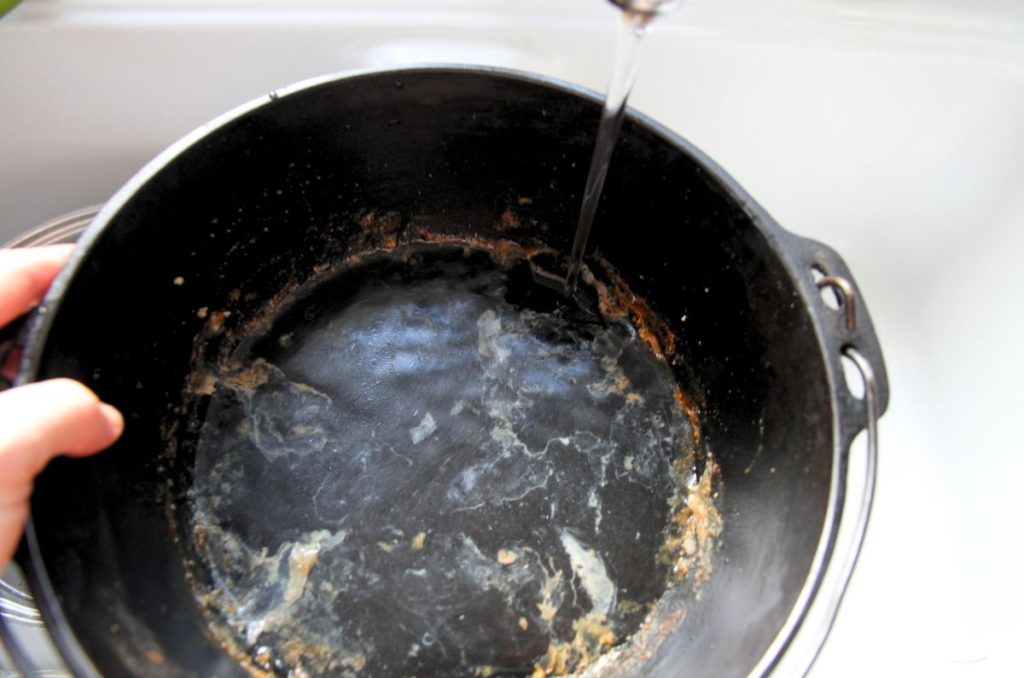
Step 3
Cover your dutch oven with a lid and set it to heat on the stovetop. Boil the water for 1-2 minutes, or until the food particles soften. If there are bits of burnt on food, it may take 5 minutes or so.
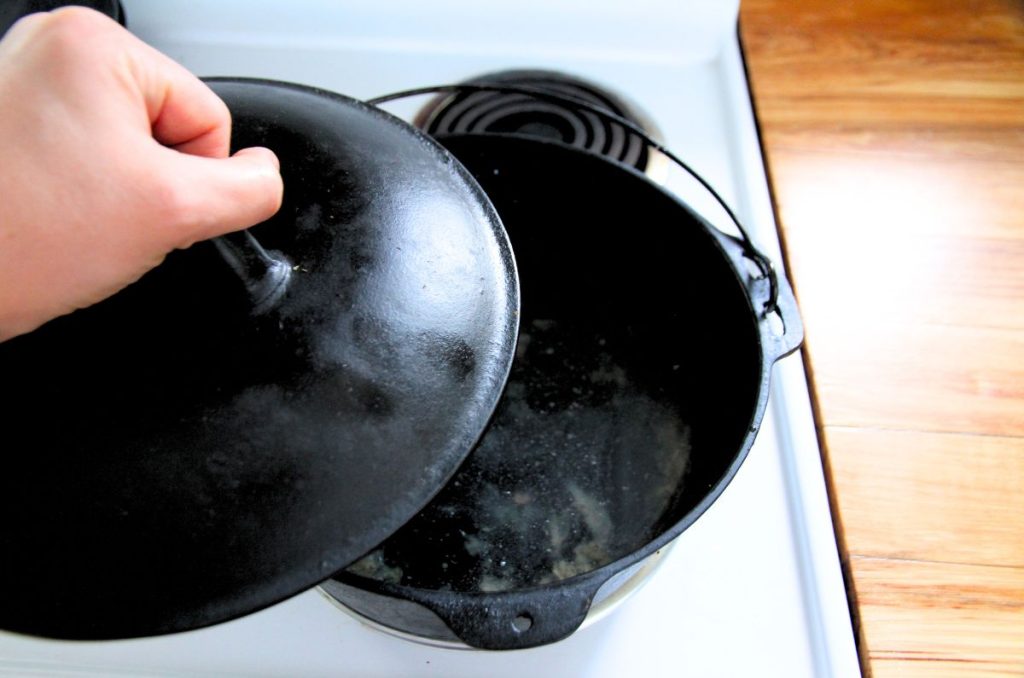
Reason for this: boiling water softens all food and makes the hand washing process very simple.
Step 4
Use silicone waterproof oven mitts to remove the lid.
Place a folded, cotton dish cloth in the bottom of your sink and set the hot dutch oven on it.
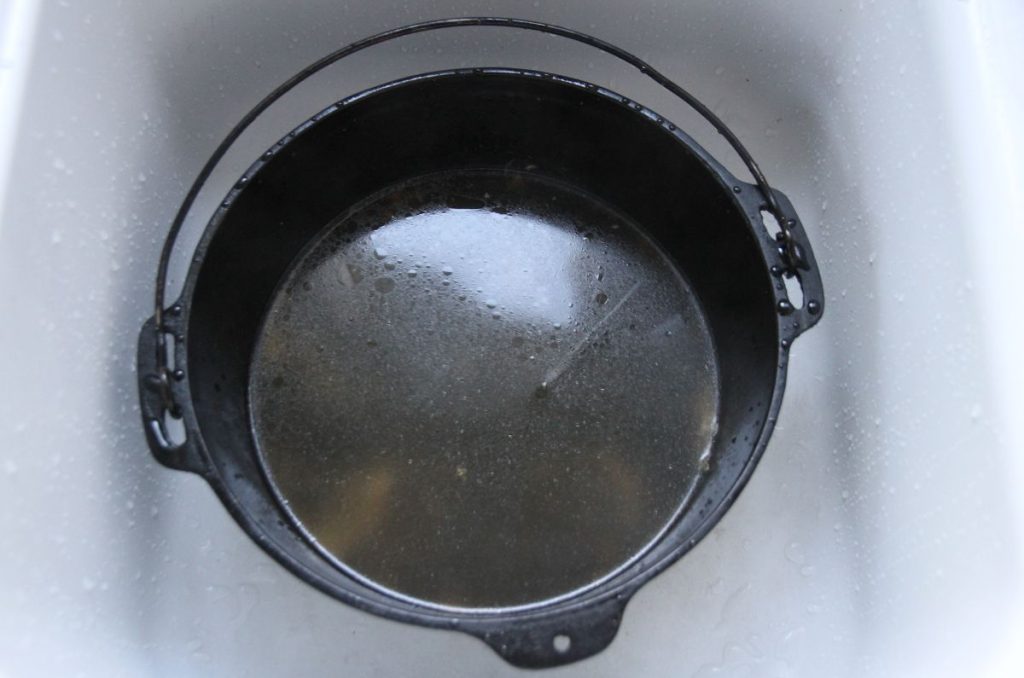
Leave your oven mitts and use a long handled brush to scrub the bottom of your pot. Also scrub the walls as well, until all the food particles let loose.

Note: after you dump the water, check your dutch oven and see if you need a second scrub to release remaining food residue. Sometimes, you might!
Step 5
If your cast iron lid is greasy, you can scrub it with hot water and a bit of soap.
The same is true for the outside of your dutch oven. Everyday dish soap won't hurt! Give the bottom of the pot a good scrub with soap and warm water, so it won't smoke the next time you use it.
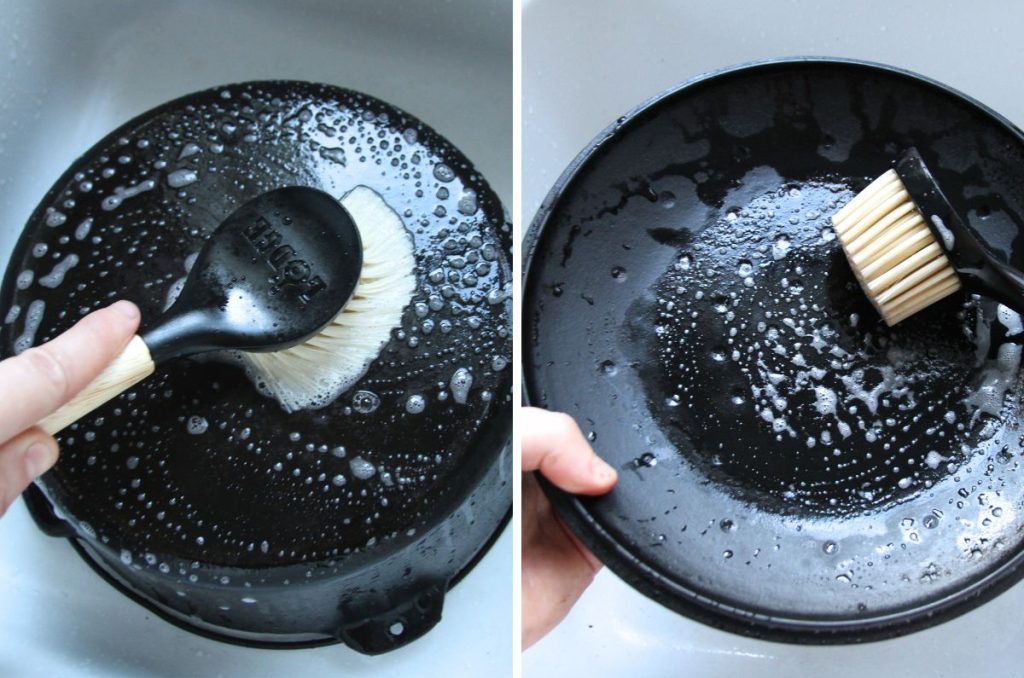
Step 6
Dry your cast iron pan with an absorbent tea towel that really wicks up the water. I like to use the ones I linked to above.
If moisture sits, it can cause surface rust, so it's important to have a bone dry dutch oven before oiling it for storage.
Before you store your cast iron, use paper towel to spread a very light layer of cooking oil or fat around the inside surface area. This helps maintain the finish.
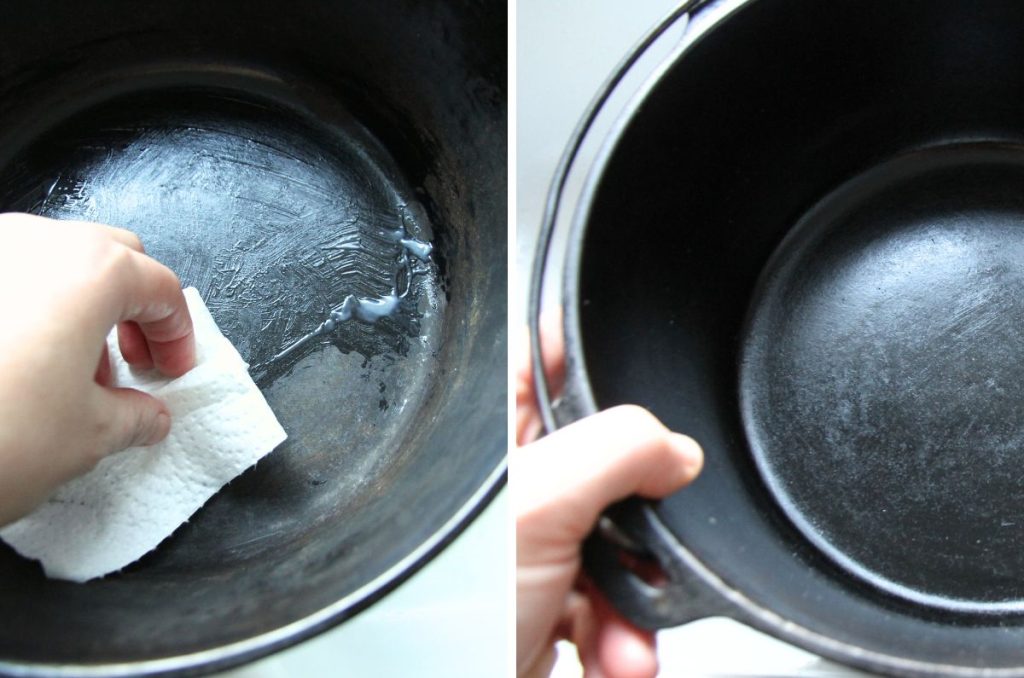
And then? Your cast iron dutch oven is ready for storage!
Questions People Ask
Does cast iron need regular cleaning?
If you can wipe the pan clean with a dry paper towel, I'm not afraid to wipe and reuse. But if there's food stuck to the pan, it's a good idea to wash.
How do I boil water in a dutch oven if it doesn't have a lid?
Grab a lid from another pot and use that instead. The idea is to trap steam and heat inside, so everything softens and is easy to scrub free.
Pin this for later:

Is it ok to wash my cast iron in warm soapy water?
You can use soap on your cast iron dutch oven. Some folks find it wears the finish down, faster. I will occasionally wash the inside of my dutch ovens with a mild soap (not dawn dish soap).
What is the best fat or oil for coating my pan?
Personally, I'm a fan of solid fats and oils. I find the finish is tougher and last longer. I wrote a list of my favorites in the post here: Best Fats and Oils for Seasoning Cast Iron Cookware
Can I follow these directions for enamel cookware?
I've never used an enameled cast iron dutch oven, so I can't speak to this.
I do know the finish is tougher and that you don't need to regularly season enameled cast iron pots. But they can get stubborn stains on the white interior, and the enamel can sometimes crack after a few years.
So I just stick with traditional cast iron.
More on Cast Iron Here



